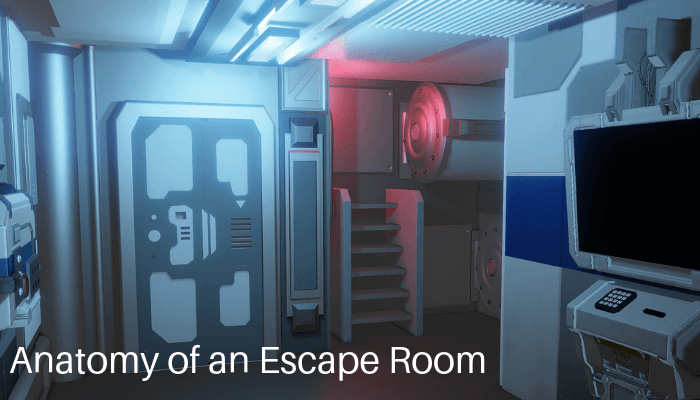It’s easy to play an escape room and walk away thinking it was a singular experience. In the hour you have, you’ll work to resolve a dynamic story by tackling challenging puzzles. The whole experience is designed using specific escape room elements to excite you. It’s designed to be immersive and thrilling, so it’s easy to meld together all the elements that create it. But the truth is that an escape room is only as strong as its individual parts. If all the elements aren’t strong, then the experience can fall flat and be too easy, too tough, or worst yet, anti-climatic. Here are some of the key elements that make up the anatomy of a successful escape room.
Atmosphere
The atmosphere is a key element in any escape room. It’s the designer’s opportunity to evoke emotions or build tension. It’s the backdrop to the story and can be developed through lighting, music and sound effects, as well as set decoration. The atmosphere is overlooked but contributes so much to the anatomy of an escape room.
Experience
Some escape rooms are not quite escape rooms (you know what we mean if you’ve ever played The Unknown). The experience you have in a game can vary wildly. From looking for items and opening lockboxes (something we don’t subscribe to) to making decisions that carry weight and define the narrative of your game, experience is an integral escape room element.
Path
By their very nature, every escape room has puzzles, but only truly skilled designers take the path through those puzzles into account. How puzzles are laid out in the game, how they are tied into the story, and what order players will encounter them in are just some of what designers take into account when planning out a room. The path through the game is another easily forgotten escape room element, but it has a big effect on player experience.
Puzzles
It might seem self-explanatory that puzzles are an important element in an escape room, but few people take into account just how crucial they are. Puzzles have to walk a fine line. They have to present enough of a challenge without being too frustrating. They have to fit the theme and enhance the immersion. And the most challenging part about puzzles, they have to be unique. No one wants to go into an escape room and find puzzles similar to ones they’ve solved before.
Set
An escape room’s set is one of the most fun and rewarding aspects to design. The set is the backdrop for everything; the atmosphere, the puzzles, and the experience that players will have. Designers get to conceive of mini-worlds and think of cool ways for players to move through them and interact with them. Like the atmosphere, the set tells part of the story, so little details can really go a long way.
Story
The story is the selling point for an escape room, it’s the bright lights on the marquee. Many customers choose which game to book based on the story and rightly so because it defines so much of the type of experience they’ll have in the game. Certain types of stories lend themselves to escape rooms and help develop the atmosphere and immersion.


